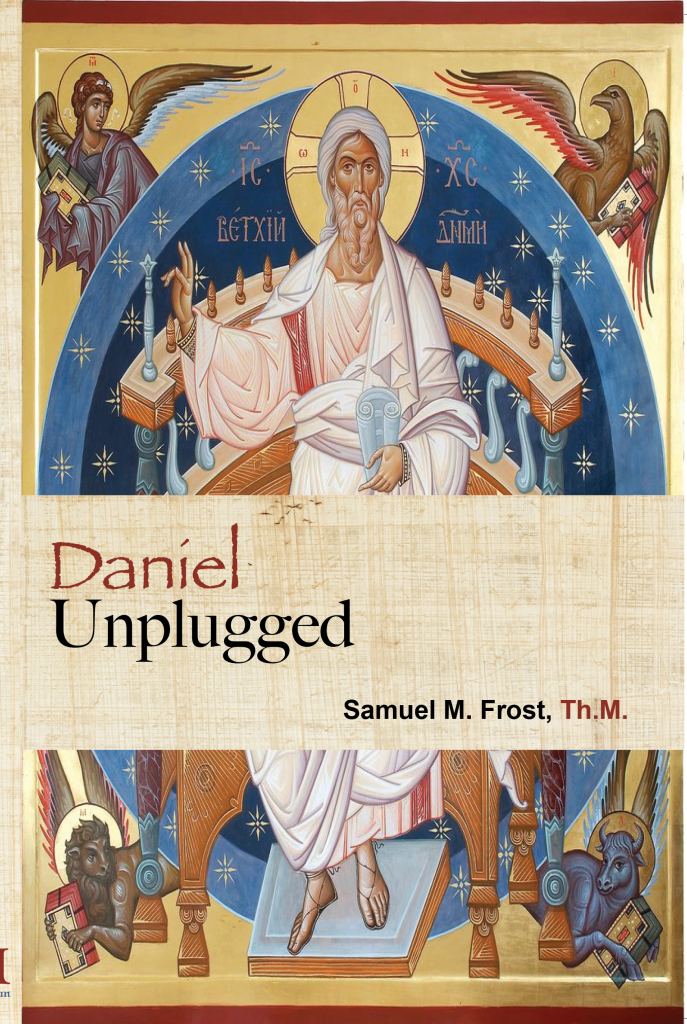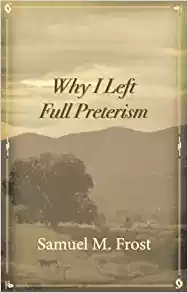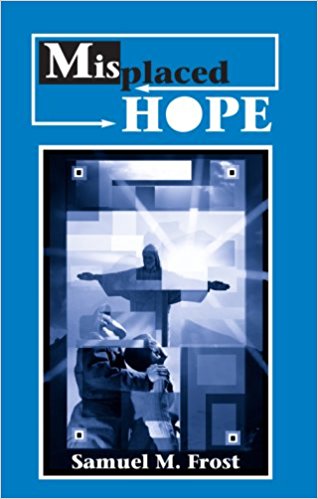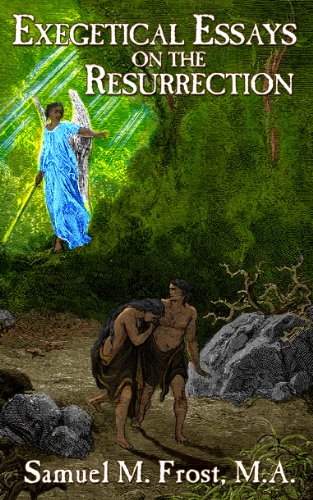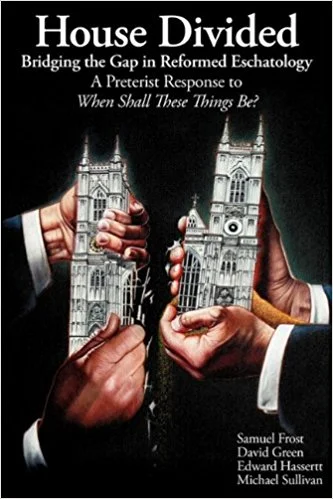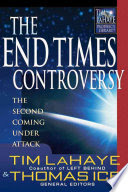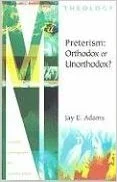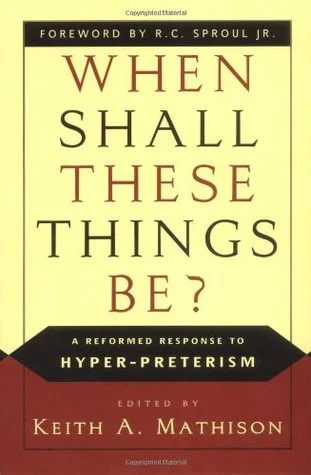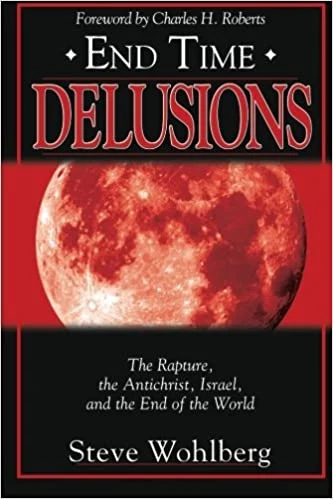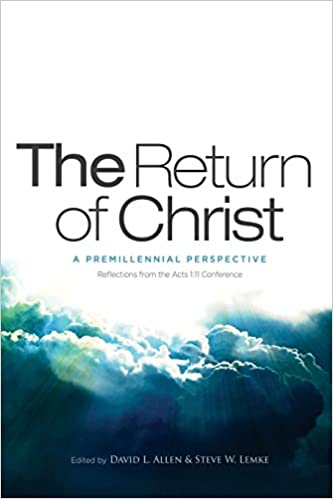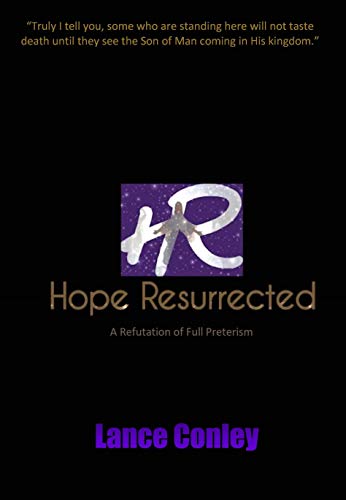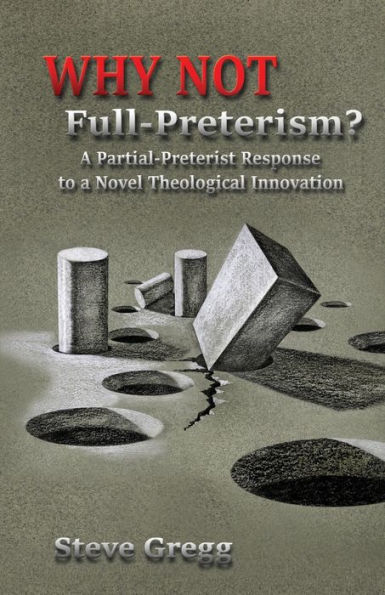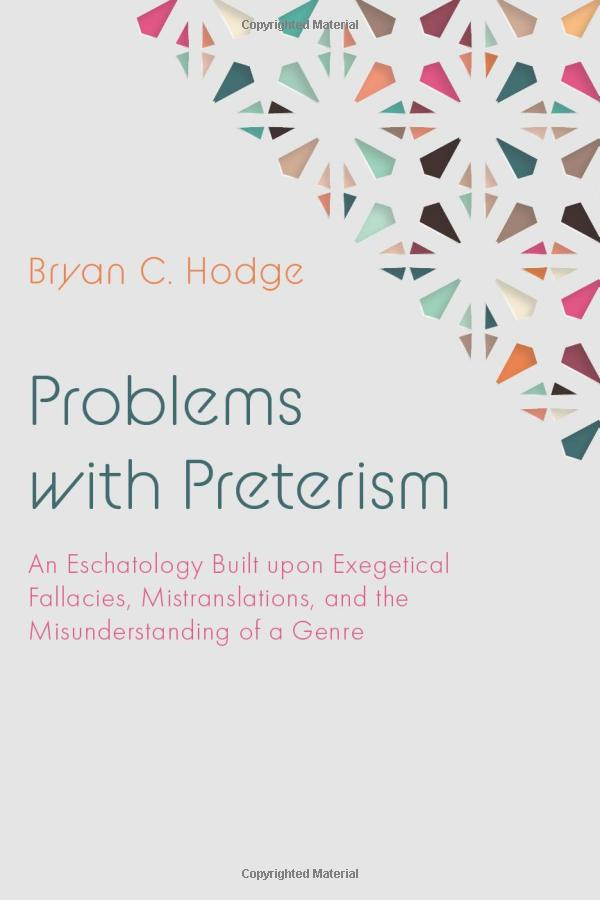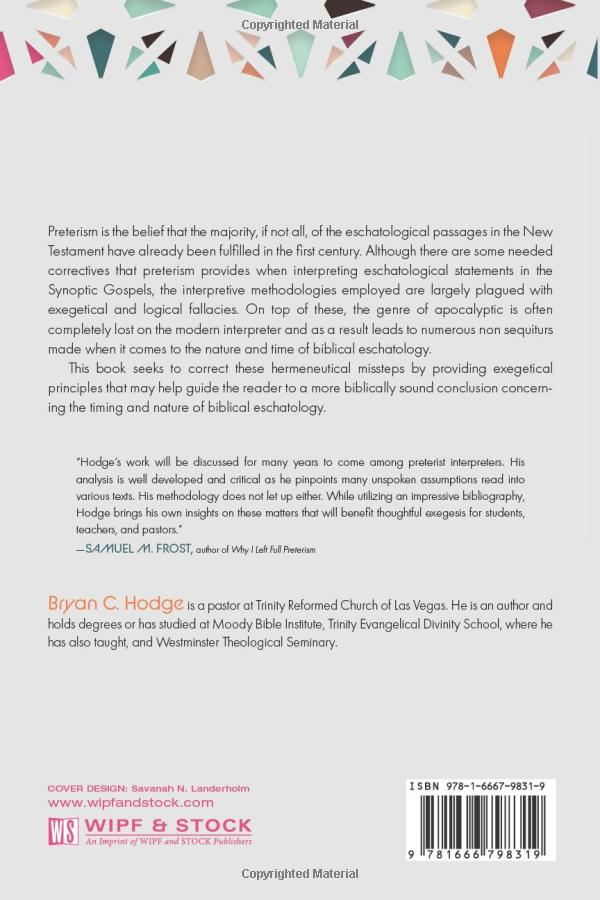By Dr. Samuel M. Frost
Mike Sullivan published a book in 2021 entitled, Armageddon Deception The Eschatology of Islam & Zionism: A Biblical Response, in which he concludes, “If I can prove [that] the Christian Church will never be raptured off the planet, would this affect the way the Church lives, should be involved in politics, and ought to develop long-term strategies to take back our country and fight against wicked globalism? If I can do this, perhaps we can awaken the Evangelical sleeping giant from the mentality that says, “You don’t polish brass on a sinking ship” (7, 8). I want to focus on that claim: “take back our country.” This begs the question: Who gave you this country? Assuming the “country” in question to be America, when was this “given” to Michael Sullivan? And, if we need to “take it back” – then Who “took it away”? I mean, you have to own something for someone to take it away. And, logically, to take it back, means that someone “took” it for “wicked” ends.
Now, just before, Sullivan castigates views that speak of bringing “global peace” (5). But, what would a taken back country in the hands of tens of thousands of Michael Sullivan’s look like? Chaos? Does God “reward,” “bless,” and “curse” countries? On the same page Sullivan says the kingdom in the NT is fulfilled “spiritually in the hearts of his people” (5). If this is the case, what would be the need to “take back” our country? Our country is not the kingdom of God, if the kingdom of God was fulfilled “spiritually” in 70 AD!
Typical of any Hyper Preterist work, Sullivan launches into the so called “time texts” – the sine qua non of Hyper Preterism – showing that nothing is to be fulfilled in our future. It’s all been fulfilled. Apparently, however, this doesn’t stop Sullivan from wanting to “take back our country” from those who took it away from him. Maybe God gave it to “us,” then someone else “took it,” and we must “get it back.” Sullivan never establishes any solid reason for doing so since the future is virtually an unknown. By the looks of today, the evil, “Global forces” at work in Sullivan’s worldview are quite intimidating, owning the financial markets, the technological markets, and certainly holding overwhelming numbers in the science departments; biological, medical, and environmental. How can these odds be overcome? Well, according to Sullivan, Christians must rid themselves of any hope of having peace on earth. God certainly isn’t going to fulfill such a thing. It’s all been fulfilled already. To have a “hope” in the Bible is to have a promise from God that such a hope is to be done; that it is decreed by God. That, in spite of all the odds, God has decreed it, and as such, this hope becomes an anchor to the soul. But, Sullivan has no such hope. He has, at best, a “theoretical possibility” based on whether or not he can convince about a few hundred million Christians that Jesus has already returned, raised the dead, changed the living, and we are now “spiritually” in the new heavens and new earth. What that has to do with the physical creation is not quite addressed.
So, what’s the solution? How can we take back our country? Well, Sullivan says that Jesus’ marching orders are the love God and our neighbor (16). That is, we don’t have literal swords, but spiritual swords. However, a biblical worldview would certainly have to include the idea of a standing military. Cromwell did, and so did Calvin. Constatine certainly did. The “black robe regiment” of the Revolutionary War of American Independence didn’t use “spiritual” guns.[1]
So, why bring up Islam? Well, you could have guessed it. Islam has spread because it touts that Jesus was false prophet who promised to come within the generation of his followers. And, since he didn’t, QED. The answer: Hyper Preterism! That is, since Mohammed preached that the “end” would happen within a span of 500 or so years from his lifetime (and that didn’t happen, obviously), then he is a false prophet. Great. But, Jesus never taught that the “end” would happen in his lifetime. That’s an invention created by critical scholars, and accepted by Hyper Preterists. In fact, Jesus told his disciples that they would see certain “things,” even a “war” in Jerusalem, but added, “the end is not yet.” Wars still happen, and so do famines: ergo, the end is not yet. The “end” Jesus had in mind wouldn’t be something that would happen only to leave his followers debating whether or not it did. When the End comes, there will be no debate. It will be made “manifest” to all.
Sullivan then moves on to consider Judaism, and how it fails. Basically, there are no “real” Jews today. I know, I know. But, that’s his take. Now, ever so controversial, Sullivan lets us know that maybe only a million Jews were killed in the Shoah of Nazi Germany, “depending on your source” (32). Once you find out how these dirty Jews operate, one can kind of sympathize with their being persecuted. Sullivan would be likened to the Pro-Palestinian chants: “The modern state of Israel and its consistent land grab in Palestine is a consistent expression of the Talmud. It is nothing but stealing land and committing racial genocide (murder) of “non-Jews” – all in the name of “God” (32). AOC, anyone? Now, I am not one to “side” with Hamas, or with Zionism (or Islam) or the Christian jihadist mentality of “taking back our country” rhetoric. 1. The earth is the Lord’s, and everything in it. 2. It is our promised inheritance in a new creation to come, in the Age to Come. 3. We are wanderers seeking a much better “country” that will come down from heaven in the last day. Simple. No need for “taking back” anything. Every need for following the Lamb wheresoever he goes as he dashes the nations to pieces with his iron scepter. Not good for the nations, but fantastic for the “nation” of his People (Read Psalm 2, then read it again one million times).[2]
It is, indeed, difficult to read through the “anti-Jews” writing of Sullivan. I never understood how Jews are not-Jews, and yet, they are “Jews” that have caused problems all over the world according to Sullivan (i.e., Bankers, Rockefellers, etc.). If they are not Jews, then they are just people, right?[3] I mean, when we look at American politics – well, let’s just say I don’t think God will be flying the Flag of Glory on that Day of Judgement. America is a cesspool of debauchery. Sorry to burst your bubbles, but God never “covenanted” this land to Christians. You’d have to have the “Scriptures” backing up such a claim; and this would come in the form of “prophecy.” However, Sullivan and the other Hyper Prets are running short on unfulfilled promises. They have none. The future is an “open” future in their world “depending” on whether or not Sullivan and Don Preston can sell to enough souls their wares so that we can “take back our country.”
Sullivan’s reactions to Jewish military espionage and the like, as if he is uncovering some sort of mystery here, reads pretty much like any country’s undertakings in this world of sin, death, flesh, and the devil (which, Sullivan has as being destroyed in 70 AD). Seems like city-building (beginning with Cain), heading to Babel, and marking out Sodom, and Egypt, all the way to Los Angeles, Berlin, Washington D.C., or Beijing, is just fraught with sin, death, corruption, love of money and the like. Can’t seem to avoid it, we human beings. You know what would rid us of this: Hyper Preterism! I digress. However, I’ll leave this subject with one more gem of a quote from Sullivan: “The modern state of Israel poses a greater threat to the U.S. than even Islam” (47). Heck, that means even Donald Trump has been duped!
The rest of Mike’s book is simply a cut and paste rehashing of Hyper Preterism in the form of Max King/Don Preston’s “corporate body view.” This is a rather stretched to the limit of credibility view that substitutes Paul’s use of “body” for a human body (which everyone with a modicum of sense gets) for the “corporate” body of Christ metaphor he uses in other places (I say metaphor, because using “body” in this sense was not new to Paul, but common to Greeks, and Hebrews for that matter, as well as Egyptians, etc). We still speak of a “student body” today, or our “body of distinguished guests.” Of course, we don’t literally think of New Castle High Schoolers as a single person; it’s a metaphor. The “corporate body” view of Sullivan, however, takes it with a vengeance as a literal, single entity; however, what is missing here is that “body” must have a singular “person.” What “person” would the “church” be if the church is, literally, “the body of Christ”? Is the Church, Jesus? I digress. Perhaps one could consult Turretin here (or, even better, Gundry).
The final section of Sullivan’s book deals with pacifism. Of course, we have to go to that old Testament that no longer exists, right? Right. Sullivan actually has Jesus defended “our Second Amendment” (436). Perhaps Jesus threw in “Law of Nature and Nature’s God” in there, too! But, as we all know, Jefferson was hardly an Evangelical, Bible-toting, Calvinist! Sullivan goes on to advance the idea that Christians can “defend their country” – which is odd, because if Jews or Arabs defend their countries, well, they are just evil. Now, who is slaughtering who “in the Name of God”? Perhaps a bomb targeted for Syria is “good,” since it is American? Maybe bombing the living hell out of Afghanis is a “just cause”? Powell and Bush thought so, and Bush is a good, Christian man, right? I don’t know, here. We lost Kissinger recently, who I have read for many years, and we are going to lose Jimmy Carter, who speaks consistently and affectionately of Jesus Christ (I recently got my son for Christmas an autographed copy of Carter’s biography). Problem: none of these men were Hyper Prets.
Sullivan continues to talk about how God wants to “work His work of justice righteousness” in government, but he nowhere provides a post 70 AD framework for this. Christ, in his view, has fulfilled the righteousness of God in the earth (or, sorry, “land,” meaning “Israel”) in 70 AD. All the world was covered in the righteousness of God by that time, as promised. The nations were discipled, and then the “end of the age” came. Period. Whatever Sullivan wants to do in terms of carving out of the “Bible” some morals, ethics, government policies (like whether or not carbon gas should be regulated by the EPA under Section 111 of the Clean Air Act), it is a mere shot in the dark. He doesn’t know the future in any way, shape, or form. Now, my son, Hunter, works in legislation here at the capital, Indianapolis. The sheer volume of paperwork, details, sub-chapters, and sub-headings, under sub-chapters (and this is just for deciding how to mark off proper water retention ponds in any given county!) is, well, daunting. What’s the “Christian” answer? Maybe Sullivan can “take back” water ponds! I digress.
“We have God given freedoms and liberties that are found in Scripture and in our Constitution” (442). Wow! We have two sources for this information! I won’t bother with the rest of the book, which proposes how to get rid of the Zionists, and the Islamists (“our country,” remember?). One gets the sense here that Sullivan is simply way over his head here. Opting for creating some sort of Third Christian Party so that we can live “peaceful” lives in ‘Merica (meaning, we can shoot our guns, drink our beers, smoke our ‘gars and teach the Bible) is, quite honestly, embarrassing for the Hyper Preterist movement as a whole.
Again, Sullivan writes, “one cannot stop God and the advancement of His Kingdom in this world” (462). What is God “advancing”? What prophecy concerning this advance isn’t fulfilled? How does Sullivan “know” that God is “advancing” his social agenda? Further, “The Church will be salt and light in this world for a very long time and this must change the way we pray and engage in our culture and politics” (462). For a “very long time”? Does history have an eventual end? How does Sullivan know this? Second, how can Sullivan take Jesus’ statements about them in the first century as being “salt and light,” and turn around and apply that to us in the twenty-first century? How does Sullivan, or any Hyper Pret for that matter, know that God personally wants every Christian to “advance” his Kingdom through social programs, political involvement, and the like? Are we guaranteed victory? How can we be guaranteed victory, unless we know that the FUTURE is GUARANTEED by the GUARANTEER? And, if we knew that, well, folks, we’d be stepping back into unfulfilled prophecy. No Hyper Pret has solved this problem, not even Gary DeMar. Remember, Sullivan believes in, “the absolute cessation of all prophecy” (93); In several charts, Sullivan diagrams how “All prophecy fulfilled at this point” (70 AD). All. Thus, “for the earth shall be full of the knowledge of the LORD as the waters cover the sea” (Isaiah 11:9) was fulfilled by the time of 70 AD. Period. In fact, Sullivan himself teaches this very thing on pages 79-80! Therefore, since this is fulfilled, what further need is there to spread God’s “knowledge” or “take back our country”? You believe, you die, you go to heaven: this is the end result of Sullivan’s Hyper Preterist eschatology, not lobbying Congress to end Abortion, or remove Socialist teachers from the NEA!
Solution: Jesus Christ, who is in heaven, at the right hand of God, ruling with a rod of iron, crashing the nations on their heads, and bringing great wrath against the world; our world, your world. He is making a new heavens and a new earth, and our goal awaits us. Save “from the fires” as many as He saves through you. Kiss the Son. Love your neighbor. Endure patiently. Avoid heresies and vain speculations. Keep watch! Deceptions abound. Find a church, and “ask not what your church can do for you, but what you can do for your church.” Selah.
[1] Sandoz, Ellis; Ed., Political Sermons of the American Founding Era 1730-1805 Volume 1. (Indianapolis, IN: Liberty Fund. 1998. Second Edition). This 1000 page tome is filled with political sermons from the pulpit, urging military warfare against the British “occupiers.”
[2] Psalm 2 utterly refutes Sullivan’s Hyper Preterism in that Jesus is seen as Ruler over all Nations within his Ascension. Thus, his current Rule is expressed in violence towards the nation-states, dashing them in pieces. He “rules in the midst of his enemies” for an indefinite time before he utterly consumes them. If such time was fulfilled in 70 AD, then what “nations” were “smashed” at that time by his “iron rod”?
[3] “The population genetics of the Jewish People,” Harry Ostrer, Karl Skorecki, Human Genetics, 2013; 132(2): 119-127. [https://www.ncbi.nlm.nih.gov/pmc/articles/PMC3543766/]. Semitic “Jews” really exist.


